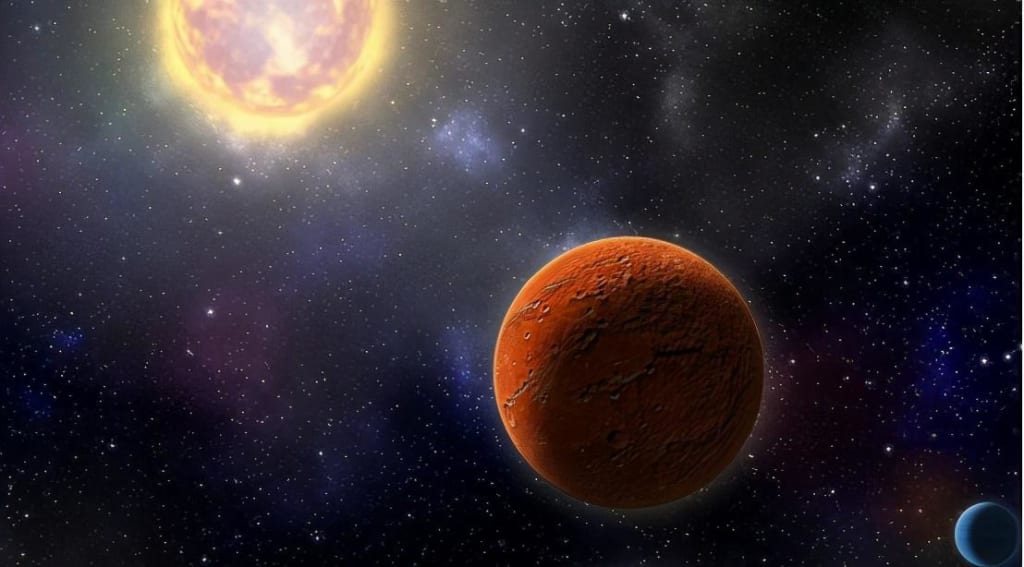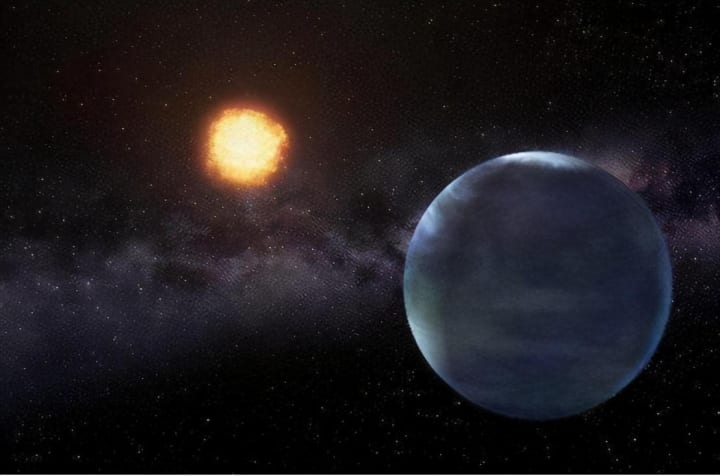36 light years away, scientists have discovered a "super-Earth".
It is classified as a priority observation

Some time ago, scientists reportedly discovered a "super-Earth" orbiting a red dwarf star 36 light-years away from Earth, with a mass about three times that of Earth and a rotation period of about 2.4 days.
This data shows that the distance between the super-Earth and the star is very close, which means that this super-Earth is not suitable for the evolution of life, but the star system GJ740, where it is located, is still one of the most important objects for scientists to observe in the next 10 years. In addition to its proximity to Earth, scientists suspect that there are other planets in this star system.
GJ740 may have multiple planets
Researchers say the discovery of the "super-Earth" is one of the closest known exoplanets to the star, and TESS observations have found another planet in the GJ740 star system, which orbits in about nine years and has a mass about 100 times that of Earth. 100 times the mass of Earth.
Of course, since GJ740 is a red dwarf star, its energy and brightness are much weaker than that of the Sun, which means that neither the confirmed "super-Earth" nor the other planet yet to be confirmed is a habitable planet, one is too hot and the other is too cold, just like Venus and Mars. The same.
Unless scientists have the opportunity to discover another planet in between in the GJ740 star system, it is possible to identify this star system as a potential life system.
Why study red dwarfs?
That said, at this stage of the exoplanet research process, scientists like nothing better than exoplanets orbiting red dwarfs, because studies over the years have concluded that if life is prevalent in the universe, then the most likely place for it to exist is in red dwarf systems.
What is a red dwarf star? These are very small stars that look reddish and are only about one-third the diameter and mass of the Sun, at the maximum. There are even some red dwarfs in the universe that are not as big as Jupiter.

Because red dwarfs are very small, this also means that the evolutionary cycle of red dwarfs is very long, compared to the sun's 10 billion year life span, the life span of red dwarfs can generally be in the tens of billions of years or even hundreds of billions of years, which also means that if there is a living planet in the red dwarf system, then the life on the planet, can have enough time to evolve.
Unlike the Earth, after about 500 million years, it will become unsuitable for life to continue evolving because the sun is getting hotter and hotter. This also means that it may be easier to find extraterrestrial civilizations in red dwarf systems.
At the same time, the number of red dwarfs in the universe is also very large, at least according to the current study of stars in the Milky Way, at least about 80% of the stars, are red dwarfs, which means that in the vast universe, red dwarfs are the most common stellar inhabitants, on the contrary, the number of yellow dwarfs similar to the Sun is not much, naturally, if life is common, it is bound to survive in the red dwarf system.
However, even so, red dwarfs, which seem to be "not too hot", have a fatal drawback, because red dwarfs generally have very strong flare activity, which leads to some unusually active red dwarf systems, and the surrounding habitable planets, which may encounter frequent super-flares, and thus life often occurs in large There is no stable environment for the evolution of life.
Speaking of which, around the Earth, there is a red dwarf system, the nearest Proximal, is a red dwarf system, at the same time, in the Proximal system, there is also a habitable planet - Proximal b. A few months ago, the mysterious narrow-frequency radio signals from the Proximal system, made scientists suspect that in the star system The mysterious narrow-frequency radio signals from Proximal system a few months ago led scientists suspect that an alien civilization similar to human civilization may exist in the star system.
In addition, another star system, Glimpse 581, is also a red dwarf system, which is highly regarded by scientists as a star system with 100% life (not excluding intelligent life) beyond the Earth, and currently, scientists have found two exoplanets with great promise of life in this star system -- Glimpse 581d and Glimpse 581f.
Of course, in terms of distance, they are only about 20.5 light-years away from Earth, so there is still a chance for humans to reach and detect them in the future.
At the same time, according to previous research, scientists believe that within 36 light-years from Earth, there are at least four living planets, and in the galaxy, there are at least 36 alien civilizations exist, which means that in the future, along with the development of human science and technology, to find the "companion" in the universe is also just around the corner, together Let's wait and see!
About the Creator
Alessandro Algardi
"She was a girl who knew how to be happy even when she was sad” and that's important you know.
Enjoyed the story? Support the Creator.
Subscribe for free to receive all their stories in your feed. You could also pledge your support or give them a one-off tip, letting them know you appreciate their work.






Comments
There are no comments for this story
Be the first to respond and start the conversation.